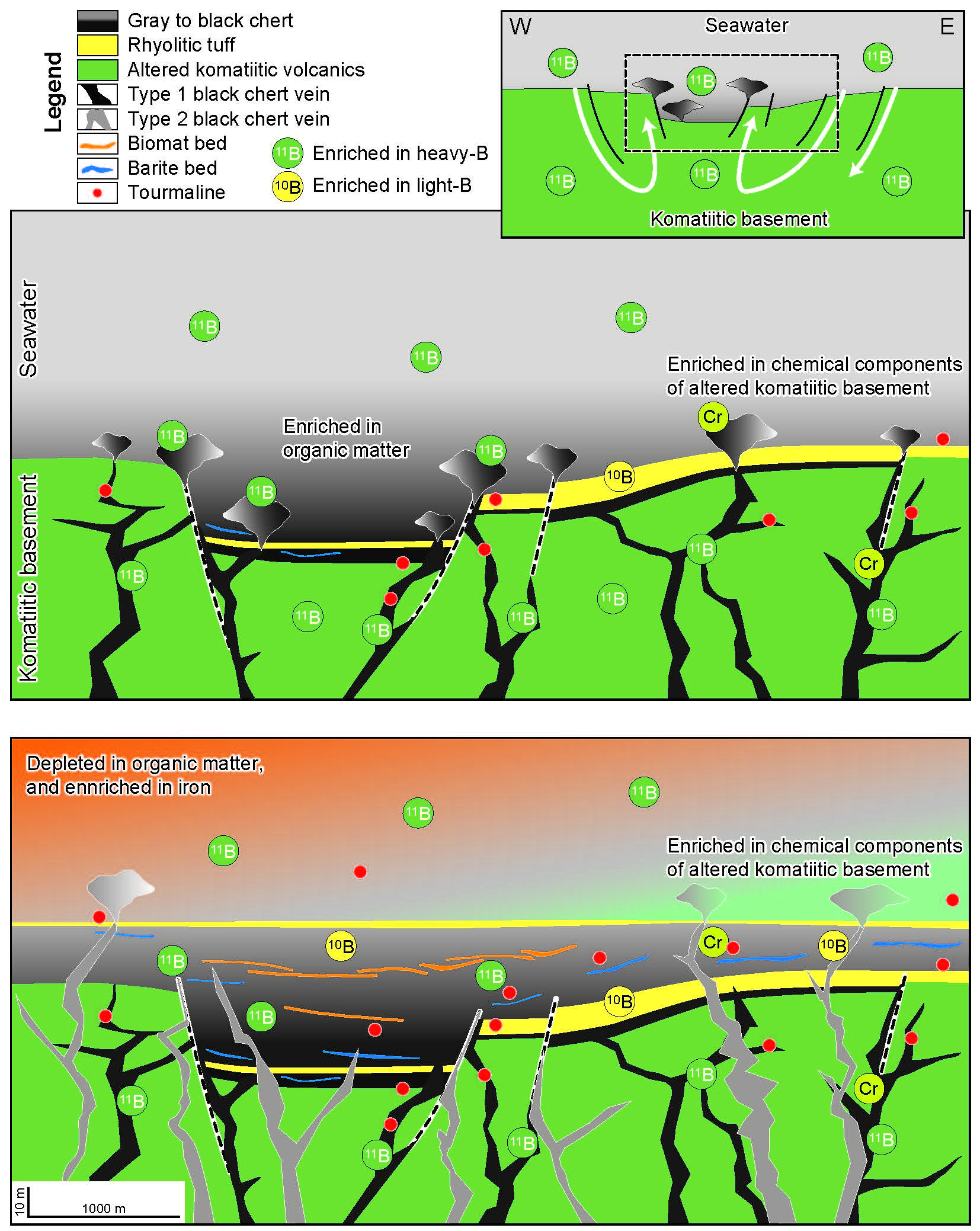Tourmaline in a Mesoarchean pelagic hydrothermal system: Implications for the habitat of early life
The RNA World hypothesis requires the synthesis of RNA to allow the emergence of life on Earth. Hydrothermal systems have been proposed as potential candidates for constructing complex biomolecules. However, in order to successfully form RNA, it is necessary to stabilize ribose, a RNA carbohydrate component. Borate has been found to stabilize ribose. Therefore, boron rich hydrothermal systems are important environments concerning the origin of life on Earth.
The 3.2-Ga Dixon Island Formation of the West Pilbara Superterrane, Western Australia, is a volcano-sedimentary sequence. The Formation represents a Mesoarchean pelagic hydrothermal system, which formed adjacent to an immature island arc. Fine-grained tourmaline, in addition to biogenic carbonaceous matter and spherulitic and tubular bacteriomorphs, are found in black chert. A boron-rich environment was responsible for the formation of these deposits.
The tourmaline is schorl or dravite of the alkali tourmaline group and the boron isotope compositions range in δ11B from -7.3 to +2.6‰. The tourmaline occurs in microcrystalline quartz matrix of black chert veins that cross cut a volcanic unit and also in a bedded black chert, which overlays the volcanic unit. The volcanic unit contains highly altered zones with hydrothermal veins. The associated lithologic and stratigraphic features suggest that the black chert veins were the conduits for upward moving hydrothermal fluids, which reached the sea floor. Subsequently, the volcanic unit was covered by organic matter-rich cherty sediments that in part were fed, and/or altered, by the hydrothermal fluids.

These results suggest that the origin of boron enrichment to form Dixon Island tourmaline is not the associated sedimentary mineral assemblage, which includes diagenetic clay, low-grade metamorphic mica, and organic matter. Instead, the tourmaline was directly precipitated from hydrothermal fluid, enriched in boron. Furthermore, the hydrothermal fluids had already concentrated the boron, in the Mesoarchean pelagic system, prior to the apex of organic matter production and microbial activity.
The Mesoarchean pelagic hydrothermal system, as exemplified by the Dixon Island Formation, could have concentrated boron enough to form the tourmaline by seawater circulation in komatiitic oceanic crust. This implies that boron-enriched hydrothermal environments, such as geysers and other terrestrial hydrothermal systems, could have also existed on the ocean floor, even in the Hadean and the early Archean times. Such a finding is important, because these periods were characterized by a limited terrestrial land mass. The results of this study support the hypothesis that a boron-enriched hydrothermal environment helps the survival and evolution of early life, through stabilization of ribose and subsequent formation of RNA.
References:
- Tsutomu Ota, Yuhei Aihara, Shoichi Kiyokawa, Ryoji Tanaka, Eizo Nakamura. Tourmaline in a Mesoarchean pelagic hydrothermal system: Implications for the habitat of early life, Precambrian Research, 334, 105475 (2019). doi:10.1016/j.precamres.2019.105475, dream/20191212092751-166561.